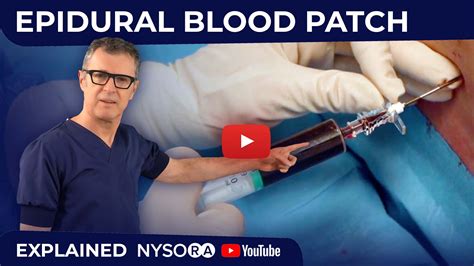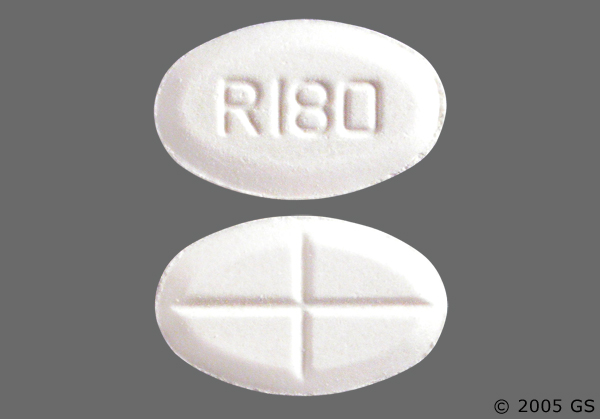The blood patch procedure, also known as an epidural blood patch, is a medical treatment used to repair a puncture or tear in the dura mater, which is the outermost membrane covering the spinal cord. This procedure is typically performed to alleviate symptoms associated with a cerebrospinal fluid (CSF) leak, which can occur after a lumbar puncture, spinal anesthesia, or other medical procedures that involve piercing the dura mater.
Understanding the Blood Patch Procedure
The blood patch procedure involves injecting a small amount of the patient’s own blood into the epidural space, which is the area outside the dura mater. This blood is usually taken from a vein in the patient’s arm and is then injected into the epidural space using a needle guided by fluoroscopy or other imaging technologies. The blood clot that forms as a result of the injection helps to seal the puncture or tear in the dura mater, thereby preventing further CSF leakage.
Indications for the Blood Patch Procedure
The blood patch procedure is typically indicated for patients who experience persistent symptoms of a CSF leak, such as:
- Severe headaches that worsen when standing or sitting upright
- Nausea and vomiting
- Dizziness or lightheadedness
- Tinnitus or hearing loss
- Double vision or blurred vision
- Neck pain or stiffness
These symptoms can occur after a lumbar puncture, spinal anesthesia, or other medical procedures that involve piercing the dura mater. In some cases, the blood patch procedure may also be used to treat patients who have a spontaneous CSF leak, which is a condition where the dura mater is punctured or torn without any apparent cause.
The Procedure: A Step-by-Step Guide
The blood patch procedure is typically performed in a hospital or outpatient setting by an anesthesiologist or other qualified medical professional. Here is a step-by-step guide to the procedure:
- Preparation: The patient is positioned on their stomach or side, depending on the location of the puncture or tear. The skin is cleaned and disinfected, and a local anesthetic is administered to numb the area.
- Blood Collection: A small amount of blood is drawn from a vein in the patient’s arm, usually 10-20 mL.
- Needle Insertion: A needle is guided into the epidural space using fluoroscopy or other imaging technologies. The needle is inserted through the skin and into the epidural space, where the blood will be injected.
- Blood Injection: The collected blood is then injected into the epidural space through the needle. The blood clot that forms helps to seal the puncture or tear in the dura mater.
- Procedure Completion: The needle is removed, and the patient is monitored for any adverse reactions or complications.
Risks and Complications
As with any medical procedure, there are potential risks and complications associated with the blood patch procedure. These include:
- Infection: As with any invasive procedure, there is a risk of infection with the blood patch procedure.
- Bleeding: There is a risk of bleeding or hematoma formation at the injection site.
- Nerve Damage: There is a small risk of nerve damage or irritation during the procedure.
- Allergic Reaction: Some patients may experience an allergic reaction to the local anesthetic or other medications used during the procedure.
Recovery and Aftercare
After the blood patch procedure, patients are typically monitored for several hours to ensure that there are no adverse reactions or complications. Patients may experience some discomfort or pain at the injection site, which can be managed with over-the-counter pain medications. It is essential to follow the instructions provided by the healthcare provider regarding activity level, bending, and lifting to avoid putting pressure on the spine.
Efficacy of the Blood Patch Procedure
The blood patch procedure has been shown to be highly effective in treating CSF leaks and alleviating symptoms associated with this condition. Studies have reported success rates ranging from 70% to 90%, depending on the severity of the leak and the presence of other underlying medical conditions. However, the procedure may need to be repeated if the symptoms persist or recur.
Conclusion
In conclusion, the blood patch procedure is a safe and effective treatment for CSF leaks and associated symptoms. While there are potential risks and complications associated with the procedure, the benefits of the blood patch procedure far outweigh the risks for patients who experience persistent symptoms of a CSF leak. By understanding the procedure, indications, and potential risks, patients can make informed decisions about their treatment options and work closely with their healthcare provider to achieve optimal outcomes.
What are the symptoms of a cerebrospinal fluid (CSF) leak?
+The symptoms of a CSF leak can include severe headaches, nausea and vomiting, dizziness or lightheadedness, tinnitus or hearing loss, double vision or blurred vision, and neck pain or stiffness.
How is the blood patch procedure performed?
+The blood patch procedure involves injecting a small amount of the patient’s own blood into the epidural space, which is the area outside the dura mater. This blood is usually taken from a vein in the patient’s arm and is then injected into the epidural space using a needle guided by fluoroscopy or other imaging technologies.
What are the potential risks and complications associated with the blood patch procedure?
+The potential risks and complications associated with the blood patch procedure include infection, bleeding, nerve damage, and allergic reaction. However, these risks are rare, and the procedure is generally considered safe and effective.


